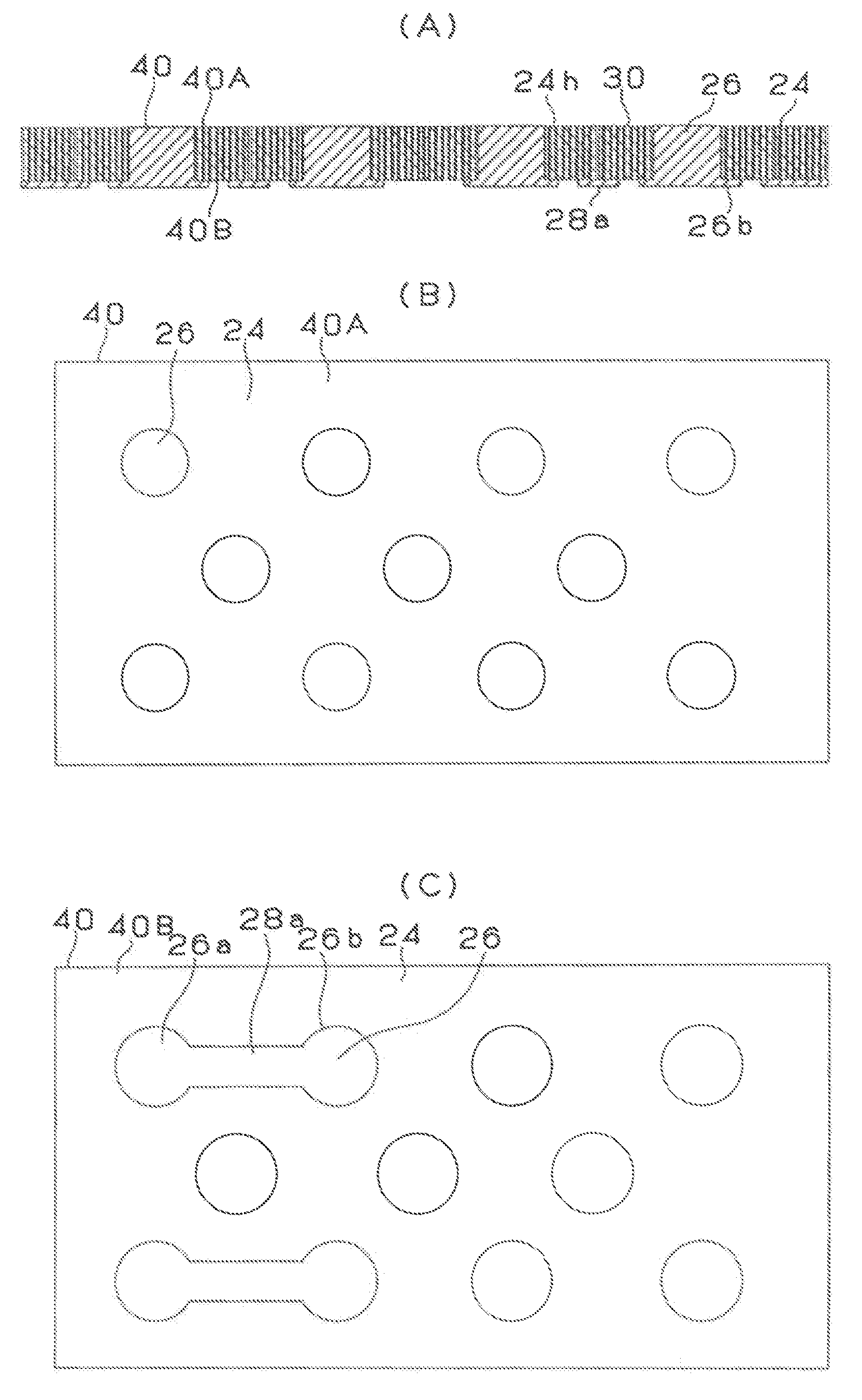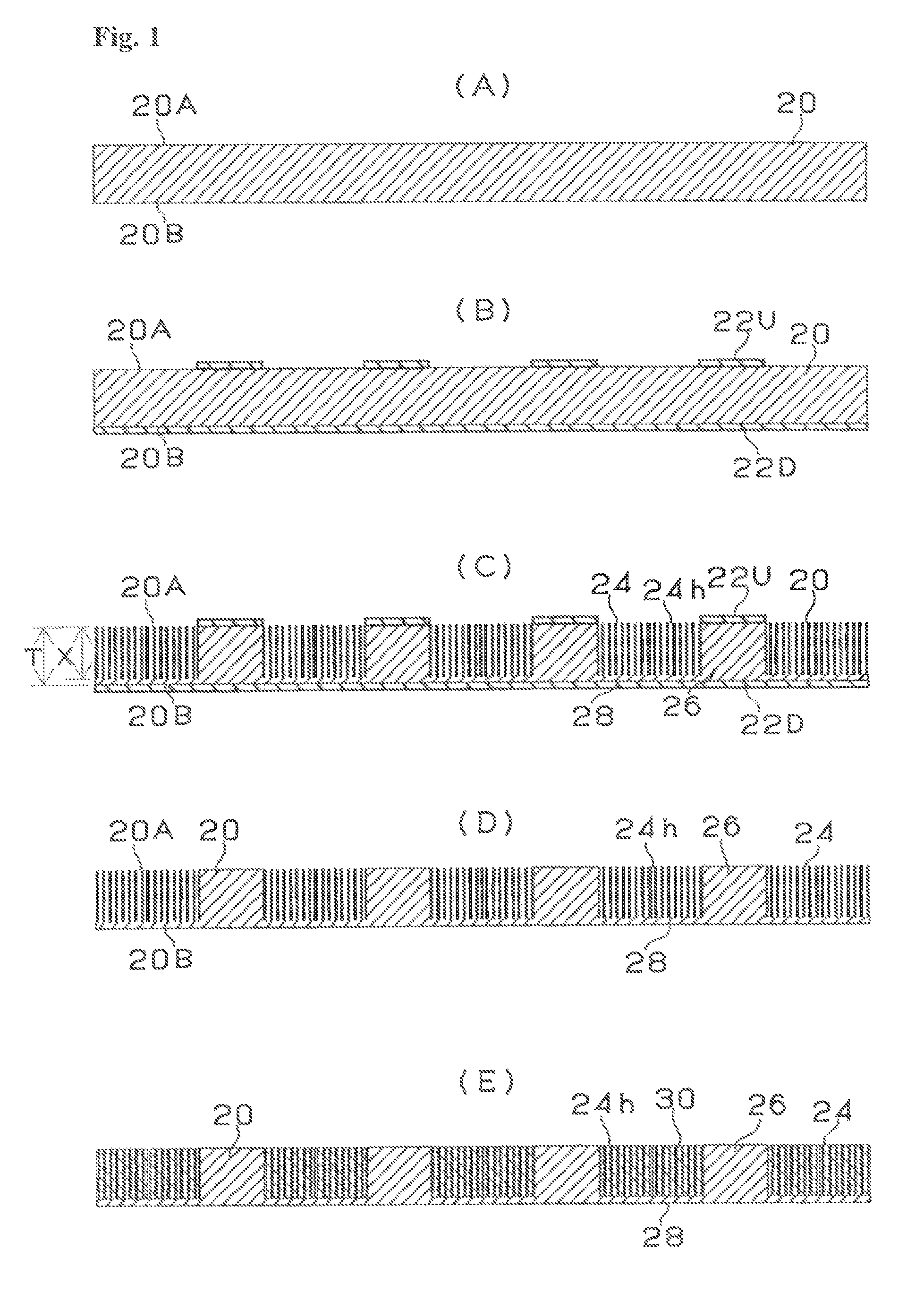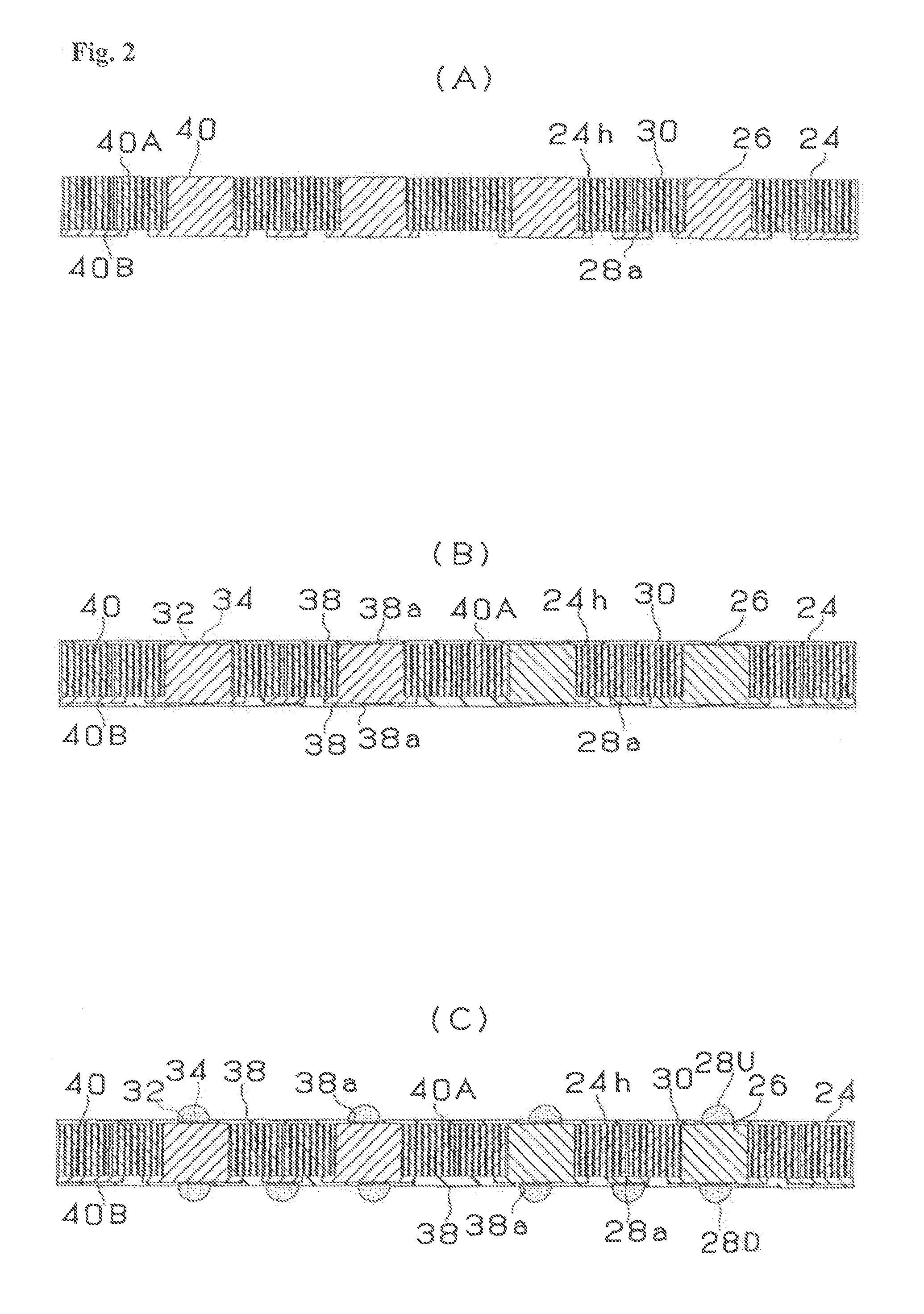Wiring substrate and method for manufacturing wiring substrate
a wiring substrate and manufacturing method technology, applied in the field of wiring substrates, can solve the problems of decrease achieve the effects of reducing the insulation resistance reducing the warping and bending degrees, and low strength of such a wiring substra
- Summary
- Abstract
- Description
- Claims
- Application Information
AI Technical Summary
Benefits of technology
Problems solved by technology
Method used
Image
Examples
embodiment
[Embodiment]
[0023]A method for manufacturing a wiring substrate according to an embodiment of the present invention is described with reference to the drawings. Metal plate 20 is prepared as a starting material (FIG. 1(A)). As for such a metal plate, the following may be listed: aluminum plate, magnesium plate, titanium plate, zinc plate, tantalum plate, niobium plate, hafnium plate, zirconium plate, tungsten plate, bismuth plate, antimony plate, aluminum alloy plate, titanium alloy plate and magnesium alloy plate. Since aluminum is a lightweight metal for use as a metal plate, it is suitable as a material for a wiring substrate. A metal plate has first surface (20A) and second surface (20B) opposite the first surface. Resist is formed on both surfaces of metal plate 20. By exposing to light and developing the resist formed on first surface (20A), resist (22U) for anodic oxidation is formed in portions to form through-hole conductors. Resist (22U) for anodic oxidation formed on firs...
first example
[0050]A method for manufacturing a wiring substrate according to the first example of the present invention is described with reference to the drawings. In the first example, 100 μm-thick aluminum plate 20 (made by Nippon Light Metal Co., Ltd., 99.99 or greater wt. % purity) is used as a starting material (FIG. 1(A)). The aluminum plate has a first surface and a second surface opposite the first surface. Resist (brand name: Photec H-6200, made by Hitachi Chemical Co., Ltd.) is formed on both surfaces of aluminum plate 20. By exposing to light and developing the resist formed on first surface (20A), resist (22U) for anodic oxidation is formed in portions to form through-hole conductors. Protective film (22D) formed on the second surface covers second surface (20B) (FIG. 1(B)).
[0051]In the following anodic oxidation bath 100, aluminum plate 20, where first resist pattern (22U) and protective film (22D) are formed, and platinum plate 108 are immersed (see FIG. 3). Using the aluminum pl...
second example
[0062]The second example is the same as the first example except for the amount to be anodic oxidized. In the second example, the amount to be anodic oxidized is greater than that in the first example. The thickness of aluminum oxide to be formed through anodic oxidation is 95 μm (the thickness of the aluminum layer=5 μm). Namely, the thickness of conductive circuits made from the aluminum formed on the second surface of insulative substrate 24 is 5 μm.
PUM
| Property | Measurement | Unit |
|---|---|---|
| thickness | aaaaa | aaaaa |
| thickness | aaaaa | aaaaa |
| thickness | aaaaa | aaaaa |
Abstract
Description
Claims
Application Information
 Login to View More
Login to View More - R&D
- Intellectual Property
- Life Sciences
- Materials
- Tech Scout
- Unparalleled Data Quality
- Higher Quality Content
- 60% Fewer Hallucinations
Browse by: Latest US Patents, China's latest patents, Technical Efficacy Thesaurus, Application Domain, Technology Topic, Popular Technical Reports.
© 2025 PatSnap. All rights reserved.Legal|Privacy policy|Modern Slavery Act Transparency Statement|Sitemap|About US| Contact US: help@patsnap.com



